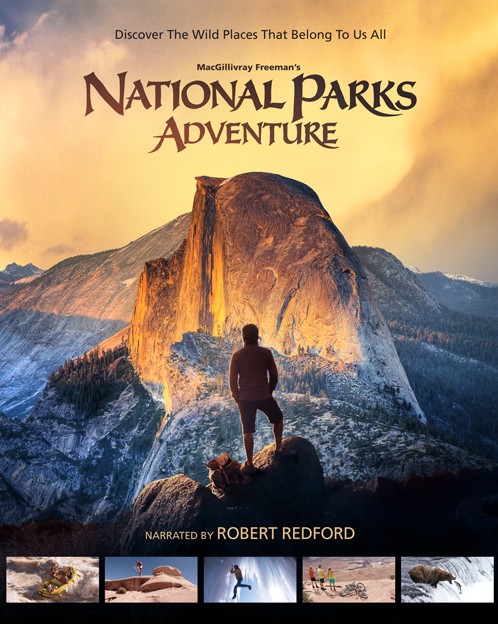by Bonnie Anderson and Dan Webster
This 45 minute exploration of a few of the 400 National Parks, which collectively cover a land mass the size of Germany, will give you a slight glimpse into the beauty of this fragile earth.
Playing on IMAX screens across the USA in part to celebrate the centennial of the National Park Service, the film by Greg MacGillivray highlights beautiful nature photography that makes viewers feel like they’ve taken their own trip to these selected locations. The film is a must see, particularly if you need the kind of renewal that only the earth can give. It’s also a good film if you’re taking a “staycation” this summer.
This beautiful documentary is stunning and the 3D imagery brings ice crystals so close you get a slight shiver and just want to touch them.
The film is narrated by Robert Redford, who often speaks about the land from a Native American perspective. One wonders why the film-makers did not invite the Native Americans to speak for themselves about this magnificent land that “no one owns and belongs to everyone.”
Much of the National Parks’ land was previously inhabited by Native American people before they were displaced to reservations by the ruling class of whites. Particularly concerning in the film is a highlighted “trip” to Devils Tower National Monument which is a geologic outcropping that juts up out of the prairie surrounding the Black Hills.
The Devil’s Tower is a sacred place to the Lakota Sioux and several other tribes of the Great Plains and Black Hills. Yet, without so much as a nod to the Indigenous people, this film shows a rock climber determinedly climbing the sacred rock, his picks penetrating the Devil’s Tower with fervor and determination. “Getting to the top” ironically demonstrates the widely held value of the white conquerors. You don’t have to dig very deep to see the disrespect with which the native people have historically been treated.
The majesty of creation unfolds in 3D before your eyes. The music helps throughout this short film. When an instrumental version of Leonard Cohen’s “Hallelujah” intones after the opening credits, you’re pretty well set for a spiritual journey.
And near the end, Jeff Buckley’s rendition of Cohen’s song encourages your mind’s eye to picture Native American people of years gone by living free in harmony with their deep love of and respect for the earth and God’s many creatures.
Most definitely take to heart these words of Wendell Berry:
“…the care of the earth is our most ancient and most worthy and, after all, our most pleasing responsibility. To cherish what remains of it, and to foster its renewal, is our only legitimate hope.”
As you watch this film you may be moved to whisper a thanksgiving to the Creator.
Bonnie Anderson is a very active lay leader in her parish, diocese and in the wider Episcopal Church. She is an experienced community organizer and lives in suburban Detroit. Dan Webster is an Episcopal priest in Baltimore, Maryland and a former broadcast news executive. But don’t expect only east coast urban perspectives here. As it turns out, they both grew up in Southern California. They blog about films and faith at Faith Reels

